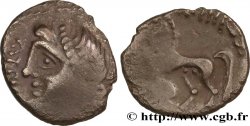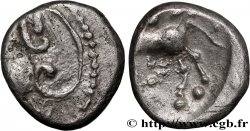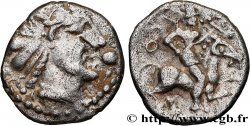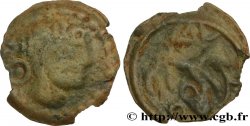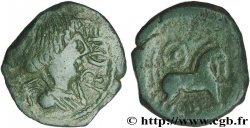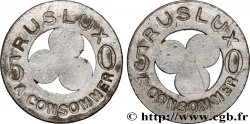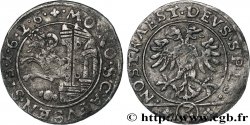Назад 1/1
bga_169235 - GALLIA - ÆDUI (BIBRACTE, Area of the Mont-Beuvray) Drachme au cheval et à l’ours
недоступный.
Товар уже продан в нашем интернет-магазине
Цена: : 155.00 €
Товар уже продан в нашем интернет-магазине
Цена: : 155.00 €
Тип Drachme au cheval et à l’ours
Дата: c. 70-50 AC.
Монетный двор / Город: Autun (71)
Металл: silver
Диаметр: 12 mm
Ориентация осей монеты: 9 h.
Вес: 2,05 g.
Редкость: R3
Комментарии о состоянии
Flan trop court tant au droit qu'au revers, lais ce denier est quand même parfaitement identifiable. Patine grise
Лицевая сторона
Аверс: легенда: ANÉPIGRAPHE.
Аверс: описание: Tête à droite, la chevelure en mèches retombant vers l’arrière.
Обратная сторона
Реверс: легенда: ANÉPIGRAPHE.
Реверс: Описание: Cheval bondissant à droite, un ours (?) à droit entre les jambes du cheval ; une esse au-dessus de la croupe.
Комментарий
Ce denier appartient à une série excessivement rare, seulement dévoilée dans le Nouvel Atlas tome III, avec la série 1172 dite "au quadrupède indéterminé sous le cheval". Les quelques monnaies de ce type connues ont toutes un revers à droite, mais les deux types d'avers (à droite et à gauche) sont connus.
Sans aucune certitude, ce quadrupède indéterminé nous semble devoir être rapproché de l'ours présent sur certains deniers éduens. Si ce denier s'inspire de ceux au sanglier des Arvernes, l'attribution aux Éduens nous semble préférable.
Sans aucune certitude, ce quadrupède indéterminé nous semble devoir être rapproché de l'ours présent sur certains deniers éduens. Si ce denier s'inspire de ceux au sanglier des Arvernes, l'attribution aux Éduens nous semble préférable.








 Cообщить об ошибке
Cообщить об ошибке Распечатать страницу
Распечатать страницу Отправить мой выбор
Отправить мой выбор Задать вопрос
Задать вопрос Consign / sell
Consign / sell
 Информация
Информация